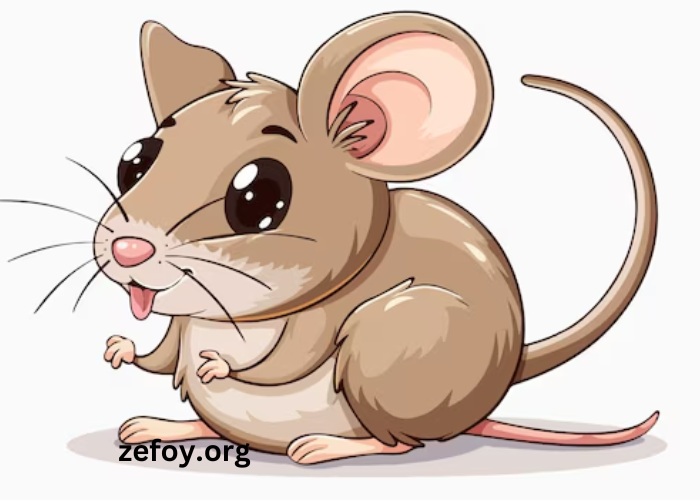Mice are intriguing creatures that have captured human imagination across various cultures and contexts. From being beloved pets to essential models in scientific research, their significance extends well beyond their small size. The visual representation of mice in art and media, especially through clipart, offers a fascinating lens through which we can explore their impact on culture, science, and everyday life. Clipart:9-C_zorkiqa= Mouse not only serves as a visual shorthand for these charming rodents but also invites deeper reflection on their roles in our world. This article aims to delve into the cultural symbolism of mice, their depiction in clipart, and their varied contributions to science and society.
What Cultural Significance Do Mice Hold?
Mice have been part of human culture for centuries, symbolizing various qualities depending on the context. In many cultures, they are seen as clever and resourceful creatures, traits that are often reflected in folklore and storytelling. For example, in Aesop’s fables, mice often represent intelligence and cunning, using their wits to overcome larger adversaries.
In contrast, mice can also evoke feelings of fear or disgust, particularly in urban settings where they are associated with disease. This duality makes them fascinating subjects in literature and art. Clipart:9-C_zorkiqa= Mouse captures this complexity, offering visual representations that can either highlight the mouse’s endearing qualities or its more negative connotations.
Furthermore, mice have also been used in religious symbolism. In some Eastern cultures, they are viewed as auspicious creatures that bring good fortune, while in others, they may represent hidden dangers or mischief. This rich tapestry of meanings surrounding mice illustrates their profound cultural significance.
How Are Mice Represented in Art and Clipart?
The representation of mice in art has evolved significantly over time. Early artistic depictions often leaned toward realism, focusing on the physical characteristics of mice. However, with the rise of cartoons and digital media, the representation of mice has become more whimsical and stylized.
Clipart:9-C_zorkiqa= Mouse showcases a variety of artistic interpretations, from playful cartoon characters to detailed illustrations. These representations can vary greatly depending on their intended use. For example, a children’s book may feature a friendly mouse with exaggerated features to evoke warmth and laughter, while a scientific publication may opt for more realistic images to highlight anatomical details.
The versatility of mouse clipart allows it to serve multiple purposes, whether in educational materials, marketing, or personal projects. This adaptability makes mice a popular subject in graphic design, where their cute and approachable appearance can enhance the visual appeal of various media.
What Role Do Mice Play in Scientific Research?
Mice are indispensable in scientific research, serving as models for studying human diseases, genetics, and behavior. Their biological and genetic similarities to humans make them ideal candidates for experimentation, leading to significant advancements in medicine.
For instance, researchers often use mice to study cancer, diabetes, and neurological disorders. By manipulating the genetic makeup of these animals, scientists can observe the effects of specific treatments, ultimately leading to breakthroughs in human healthcare.
The use of mice in research is not without controversy, as ethical considerations regarding animal testing come into play. However, their contributions to science remain undeniable. Clipart:9-C_zorkiqa= Mouse serves to remind us of the scientific importance of these animals, often depicting them in laboratory settings or as part of educational content aimed at raising awareness about medical research.
How Do Mice Influence Popular Culture?
Mice have found their way into various aspects of popular culture, appearing in cartoons, movies, and literature. Characters like Mickey Mouse and Stuart Little have become iconic figures, influencing generations and shaping perceptions of mice in general.
The portrayal of mice in media often highlights their intelligence, resourcefulness, and endearing qualities. These representations contribute to a more positive image of mice, contrasting with the more negative stereotypes they may face in real life. The use of clipart:9-C_zorkiqa= Mouse in marketing and branding often draws upon these positive associations, making mice relatable and appealing to audiences.
Moreover, the phenomenon of anthropomorphizing mice allows creators to explore complex themes, such as friendship, bravery, and adventure. These narratives resonate with audiences, making mice not just subjects of interest but also symbols of larger human experiences.
What Are the Educational Uses of Mouse Clipart?
Mouse clipart serves as an effective educational tool across various disciplines. In biology classes, for example, teachers can utilize clipart:9-C_zorkiqa= Mouse to illustrate concepts related to animal anatomy, behavior, and genetics. Visual aids can significantly enhance comprehension, making complex information more accessible to students.
Additionally, mouse clipart can be used in children’s educational materials, fostering engagement and creativity. For instance, activities centered around storytelling can incorporate mouse characters, allowing children to explore narratives while developing their literacy skills.
In environmental education, mice can be used to teach about ecosystems, food chains, and the roles different species play within their habitats. By incorporating visual elements, educators can create a more interactive and stimulating learning experience.
How Are Mice Depicted in Folklore and Mythology?
Mice have a prominent presence in folklore and mythology, often embodying themes of cleverness and survival. Various cultures feature tales that highlight the virtues of mice, portraying them as heroes who outsmart their foes.
In some Native American traditions, mice symbolize humility and resourcefulness. Stories featuring mice often depict them as brave characters who overcome challenges through wit rather than brute strength. These narratives can impart valuable life lessons, emphasizing the importance of intelligence and cunning over physical prowess.
The use of clipart:9-C_zorkiqa= Mouse can serve as a visual representation of these stories, allowing educators and storytellers to bring these age-old tales to life. By illustrating mice in different cultural contexts, we can celebrate their significance in human storytelling and the morals they convey.
What Psychological Associations Do Mice Evoke?
Mice often evoke a range of psychological responses, influencing how people perceive them. On one hand, their small size and timid nature can elicit feelings of affection, especially among those who view them as pets. Many people find comfort in the presence of mice, associating them with warmth and companionship.
Conversely, mice can also trigger fear or aversion, particularly among individuals who associate them with unsanitary conditions or disease. This duality highlights the complexity of human emotions toward these creatures, reflecting deeper societal attitudes and fears.
Clipart:9-C_zorkiqa= Mouse serves as a tool to explore these psychological associations, offering visual representations that can evoke various feelings. Depending on the style and context, mouse images can either emphasize their endearing qualities or highlight the apprehension they may inspire.
How Do Mice Contribute to Environmental Studies?
Mice play an important role in ecological research, particularly in studies focusing on biodiversity, habitat conservation, and population dynamics. As a common species found in diverse environments, they serve as indicators of ecosystem health.
Research involving mice can provide valuable insights into the effects of habitat loss, climate change, and pollution on wildlife. By monitoring mouse populations, scientists can gauge the overall health of their ecosystems and make informed conservation decisions.
Utilizing clipart:9-C_zorkiqa= Mouse in environmental education materials can help raise awareness about these contributions. Visuals can effectively communicate complex ecological concepts, fostering a deeper understanding of the interconnectedness of species and their habitats.
Conclusion
In conclusion, the significance of mice extends far beyond their small size, permeating various aspects of culture, science, and education. The use of clipart:9-C_zorkiqa= Mouse highlights the multifaceted roles that these creatures play in our lives, from beloved pets to vital research subjects.
As we continue to explore the diverse representations of mice in art and media, we gain a deeper appreciation for their impact on our world. Mice not only enrich our cultural narratives but also contribute significantly to scientific understanding and environmental awareness. By embracing their complexity and charm, we can celebrate the enduring presence of mice in human society.




